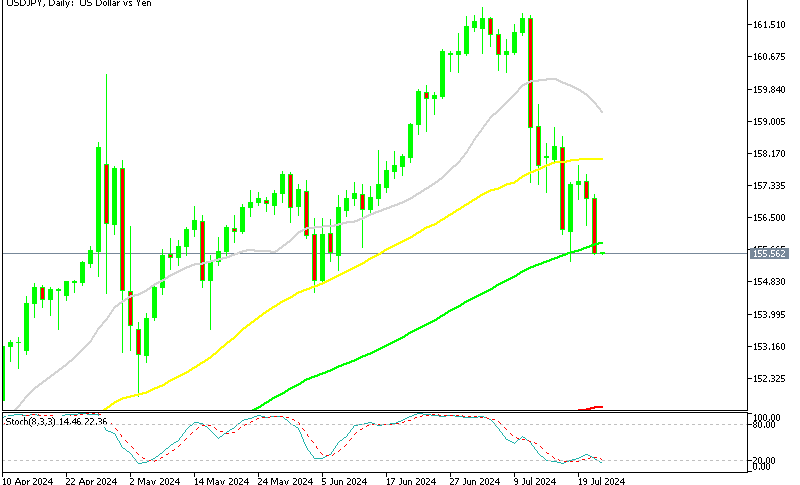The Great Contrarian Indicator – Retail Sentiment
I’m sure you’ve heard or read that most forex traders consistently lose money. Unfortunately, this is true. Many people engage in forex trading without proper education and training and this makes them vulnerable to losses. Most individuals underestimate the formidable challenge of trading the financial markets.
The Trend is Your Friend
The most important trading principle is to trade in the direction of the prevailing trends. Most retail traders don’t abide by this rule and therefore they constantly lose money.
Retail Positioning and Strong Trends
As we know, retail traders mostly position themselves against strong trends instead of aligning themselves with these trends.
Why does this happen? An important reason is that retail traders like to pick tops and bottoms in strong trends. They like to ‘buy low’ and ‘sell high’.
When the market trends lower and breaks to fresh lows, these traders reason that the low price is a bargain to buy at. Conversely, when the price breaks to higher highs in a strong bull trend, they sell because they esteem the price to be really expensive.
While there is nothing wrong with buying low and selling high, you should do this in the direction of the trend, and not against it.
Retail traders also tend to trade on lower timeframes, which are usually much less reliable than higher timeframes like the daily and weekly.
For example, an inexperienced retail trader would sell during a downtrend on a 5-minute chart which moves against a really strong uptrend on the daily chart. If he’s lucky, he’ll make a few pips, but the institutional players trading ‘with-trend’ on higher timeframes will probably take his money.
Retail positioning can be an incredible tool to confirm strong trends, point out possible trend reversals, and avoid market consolidations.
Practical Examples
Let’s look at current retail positioning data on a couple of major instruments:

Dailyfx.com SSI Index
SSI stands for Speculative Sentiment Index. This tool tells you how many retail traders are long, and how many are short on a particular currency pair (or another financial instrument).
Let’s take the EUR/USD as an example. The number we see here is -2.4868. This means that for every open long trade, there are 2.4868 open short trades. That means that 28.68% of open exposure on the EUR/USD is currently on the buy side and 71.32% on the sell side.
Now let’s look at what the EUR/USD has been doing:
 EUR/USD Daily Chart
EUR/USD Daily Chart
Here you can see, that for several weeks the EUR/USD has been trading higher. The price is currently above the 200-MA and the 20-EMA which confirms the bullish trend direction.
Today’s ECB rate decision and press conference weighed on the euro, but the bigger picture remains bullish despite the counter-trend correction.
In the chart above, you will also notice other characteristics of an uptrend – higher swing highs and higher swing lows.
The uptrend is obvious. However, retail traders are selling aggressively into this ascent and losing money.
You will probably be surprised to find out that retail traders have been net-short the EUR/USD since the 18th of April this year. Since the close on 18 April, the EUR/USD exchange rate has risen 486 pips.
Obviously, most of these traders have been wiped out of their trades and the ones who are still holding on to their short positions are on the back foot, sitting on a large loss.
Now let’s look at the USD/JPY:
 USD/JPY Daily Chart
USD/JPY Daily Chart
On the USD/JPY, the current SSI value is 1.92. This means that for every short position there are 1.92 long positions. This translates into 65.71% long positions and 34.29% short positions.
Just like with the EUR/USD, retail traders have been fighting the USD/JPY downtrend for quite a while, even from the 18th of May this year. (On this day, retail traders turned net-long).
At the moment the USD/JPY SSI reading is 1.92 which isn’t too extreme, but if we see a resumption of the downtrend next week this reading could quickly move above 2.0. Keep an eye on this pair!
While we’re busy with the USD/JPY, remember that we have some high-level event risks next week that could impact this pair tremendously. The FED (Federal Reserve) and the BOJ (Bank of Japan) have their interest rate decisions on Wednesday and Friday, respectively.
To learn more about trading the USD/JPY, simply follow this link: Trading the USD/JPY Currency Pair – A Beginner’s Guide.
How to Use Retail Positioning Data
Do you notice how retail traders like to fade powerful market moves?
What is so phenomenal about this great indicator, is that extremely strong trends often accompany extreme SSI readings.
This characteristic enables us to build trading strategies around this concept. Some say that readings above 2.0 or below -2.0 should be considered as extreme (and useful for trading purposes). Others like to trade when readings are above 3.0 or below -3.0.
Strategies and Techniques
Usually, SSI readings above 2.0 and below -2.0 yield good results.
EUR/USD Example
When we have a strong uptrend on, for example, the EUR/USD, and SSI readings are below -2.0, we can investigate the situation and be on the lookout for buying opportunities.
We know from the negative SSI reading that the majority of retail traders are selling into the rise. We want to trade against these people, and with the trend just like the institutional players.
+-+Copy.jpg)
To land an airplane safely, you need to approach the runway against the wind. To make money in the markets, you need trade against retail sentiment.
At the moment, however, the EUR/USD uptrend is approaching an important zone of resistance on the weekly chart. Nevertheless, if we get a good rejection candle in the region of the 20-day exponential moving average, a good buying opportunity could arise.
Something else to keep in mind is that today’s ECB meeting had a negative effect on the euro. Personally, I would like to see solid confirmation that the uptrend is resuming before entering a long trade. Just in case this ECB meeting was the catalyst for a trend reversal on the EUR/USD.
If you’d like to learn more about trading the EUR/USD, follow this link: Trading the EUR/USD Currency Pair – A Beginner’s Guide.
How to Trade Extremely Strong, Non-Volatile Trends
Trading really strong, non-volatile trends with SSI can be tricky if you don’t know how to approach them. Oftentimes there are few meaningful retracements on daily charts to take advantage of in these conditions.
This problem can be bypassed by either trading shallow retracements on smaller timeframes or by trading breakouts on daily charts. Breakouts can also be traded on smaller timeframes, of course.
For more in-depth information about these trading techniques, please follow the following link: How to Make Sense of Different Market Structures.
In this article, you’ll also learn how to trade volatile trends effectively.
Of course, it’s critical to analyze the instrument you want to trade, properly, and not just trade it because the SSI reading is extreme.
You need to handle every instrument individually and keep important fundamental and technical factors in mind when making trade decisions.
Exotic and Minor Pairs / Instruments
Reliable retail positioning data isn’t usually available on less significant instruments like exotic and minor currency pairs. However, the same principles count when trading these instruments.
When an established trend accelerates, retail traders fight against it with renewed determination. As the trend progresses, these traders get forced out of their counter-trend positions. Their stop losses get triggered or their positions are force-closed when their accounts run out of available margin.
The big boys (mostly institutional traders) who trade with the trend harvest these retail traders’ money with ease.
So even though you might not be able to access retail positioning data on certain instruments, you can trade them in the same way as the major currency pairs.
Something you should keep in mind, though, is that retail traders are sometimes on the right side of the market, especially in ranging environments. However, retail traders are wrong most of the time and trading against retail sentiment is really rewarding when you combine it with sound technical analysis and good money management.
Have you tried out our trading signals? Not only do we provide forex trading signals but also signals on gold, crude oil, and the Nikkei 225 stock index.
Happy trading!











